The woman encouraging New Zealanders to eat more seaweed

Kelp, the large brown algae commonly found on New Zealand beaches, can grow more than 30 centimetres daily. When dried, it’s known as kombu.
A marketer who has worked on several of the world’s biggest brands has never felt anything like the excitement she feels for the humble weeds of the sea
Words: Kate Coughlan Photos: Emma Fry
“I get goosebumps when I talk about what this product does for people and the planet,” says Hayley Fraser-Mackenzie, whose career has included marketing for international giants Disney Entertainment and HIT Entertainment’s No.1 toy, Bob the Builder. She was Bob’s global brand manager for years, and worked on the HIT acquisition of another mega-favourite, Thomas the Tank Engine. Yet the magnitude of these brands never gave her anything like the thrill of what she is doing now.
Zimbabwe-born Hayley and her husband John (also from Zimbabwe — they met at university in Cape Town) spent 12 years in London (he in finance with the global food giant Heinz) before bringing their then-young children to New Zealand to join their family, who had already immigrated.
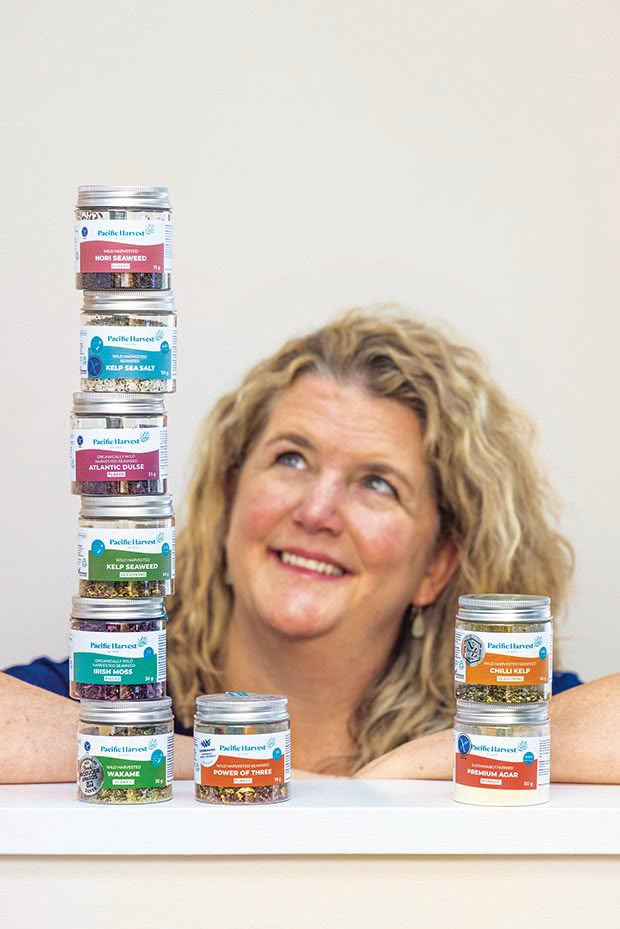
Hayley Fraser-Mackenzie with Pacific Harvest’s range of seaweed seasonings.
On arrival, John became the New Zealand finance director of Goodman Fielder, and Hayley worked for NZ Trade & Enterprise (NZTE), helping the country put its best foot forward in export markets.
With her children growing up and in recognition of her passion for bringing great products to market, Hayley started a small business called the Natural Sleep Shop before selling it as a going concern and turning her attention to the growing world of plant-based nutrition.
Her work at NZTE opened her eyes to the value of New Zealand’s provenance in food exports, which informed her search for a uniquely Kiwi food-based business. She made the perfect find when she came across Pacific Harvest, a 20-year-old business selling imported and locally harvested food-grade seaweeds. She bought the company from its retiring founders four years ago and has been on fire since.
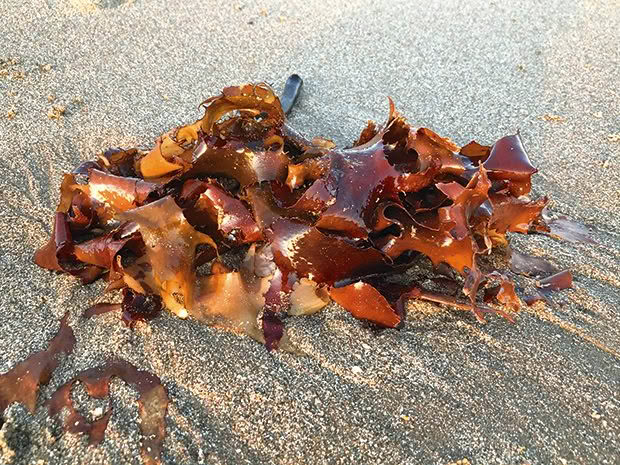
“I have never worked on anything so multi-faceted. It never becomes boring. I get increasingly excited by the potential of this, as there is probably a lifetime of learning about the world of seaweed.
“It is a plant-based, nutrient-dense product that plays into New Zealand’s unique advantages of a relatively pristine ocean environment and unique local species. It can be exported to an international market looking increasingly for immune-boosting diets and alternatives to animal-based foods.”
All seaweed species — from microscopic algae to mighty kelp forests towering to underwater heights rivalling giant redwood trees — are super-absorbers, so water quality matters. And this is the whole point; seaweeds absorb minerals, vitamins and nutrients from the seawater and concentrate them in their fronds. Herein lies its potency.

“For human health, it is low-fat, low-calorie, nutrient-dense, carbon-negative and abundant. It doesn’t need water or cooking.
“And for the planet, seaweed is like an eco-engineer. All seaweeds photosynthesise, absorbing carbon and releasing oxygen. Since 70 per cent of the earth is covered by ocean and different seaweeds occur at different depths, they perform crucial cleaning and cooling functions to keep the planet healthy and provide over 70 per cent of its oxygen.
“This is a marketer’s dream. It just doesn’t get any better than this. I don’t only get goosebumps when I talk about it but also a sense of privilege to work on such an important product.”
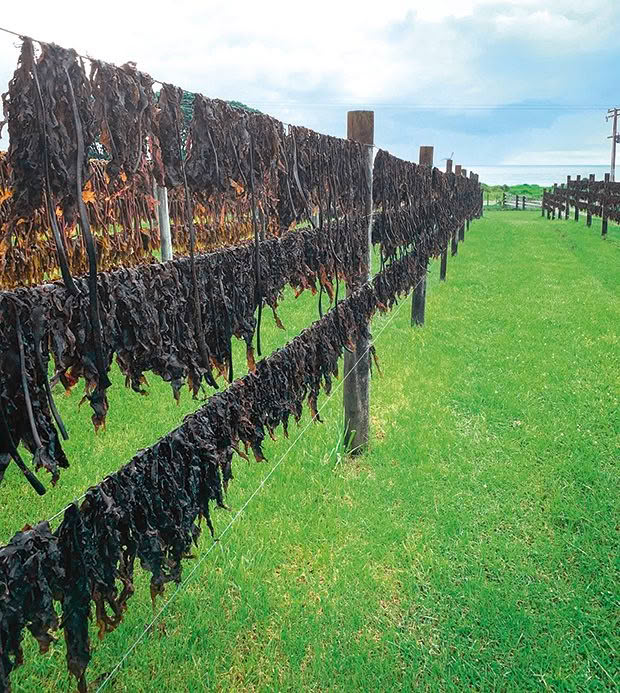
When air-dried, seaweed, which is sensitive to heat and light, retains its mineral density.
Since purchasing the company, Hayley and her team have tripled sales and increased the retail outlets across Australasia to more than 850. With others, she’s also begun advocating an overhaul of the commercial seaweed harvest regulations.
“This is how we can develop a sustainable seaweed industry for domestic use and export, utilising the country’s unique advantage. But that cannot happen under an inappropriate regulatory climate.
“Seaweed falls under the Fisheries Act, which is like a sheep farmer trying to work within the regulations of viticulture. Asia has a long history of seaweed consumption and a traditionally large seaweed-farming industry.
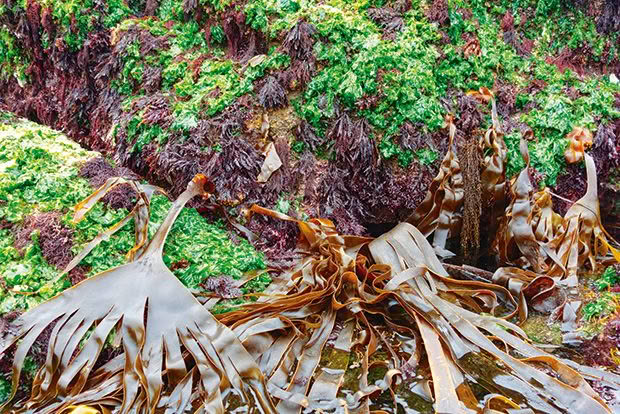
“However, customers are mindful of their product’s source, and many Asian consumers are avoiding Japanese-harvested products due to the rupture of the Fukushima Daiichi Nuclear Power Plant water-cooling system. New Zealand has relied on wild harvest, but the opportunity is ripe for a commercial farming operation. Some species can be successfully grown and harvested in seawater tanks, though others must be ocean-grown.”
Hayley is part of a new industry group, Aotearoa New Zealand Seaweed Association (anzsa.org.nz), lobbying the government for nature-positive and culturally respectful, common-sense regulations to provide an export pathway. She believes significant investment for the industry is poised, awaiting such decisions and a regulatory framework.
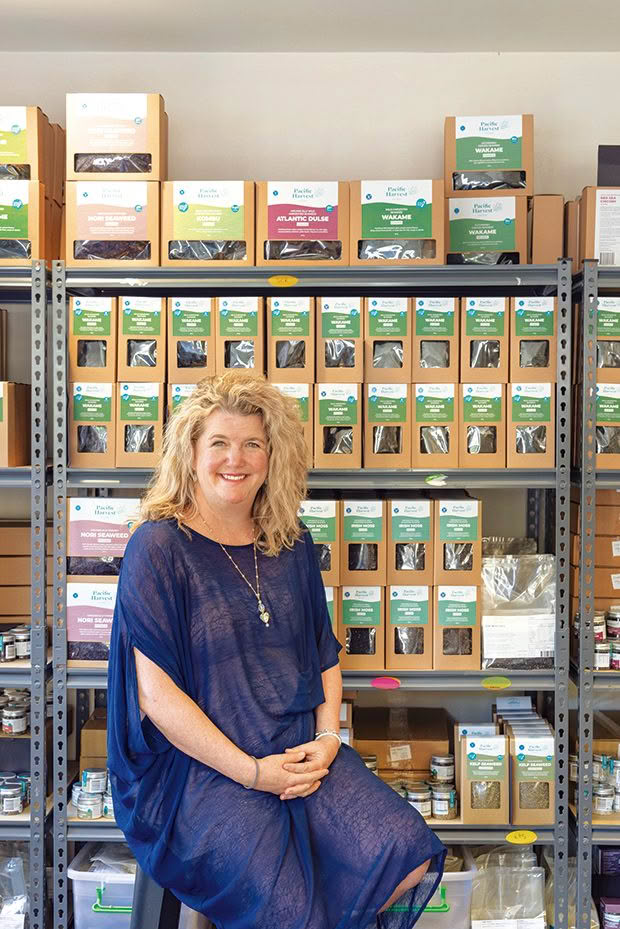
NEW ZEALAND HAS:
• 15 times more ocean than land area
• one of the world’s largest exclusive economic zones (EEZ) at 4.3 million square kilometres
• the ninth longest coastline in the world
• 1000-plus species of seaweed
• one of the most pristine and nutrient-filled oceans on the planet.
SEAWEED’S COLOURFUL WORLD
Seaweed is divided into basic colour groups (red, green and brown). For optimum health, eat small amounts of all three regularly.
Seaweeds are light and heat-sensitive, so add them at the end of cooking, use them as a garnish or replace iodised commercial salt with a seaweed blend.
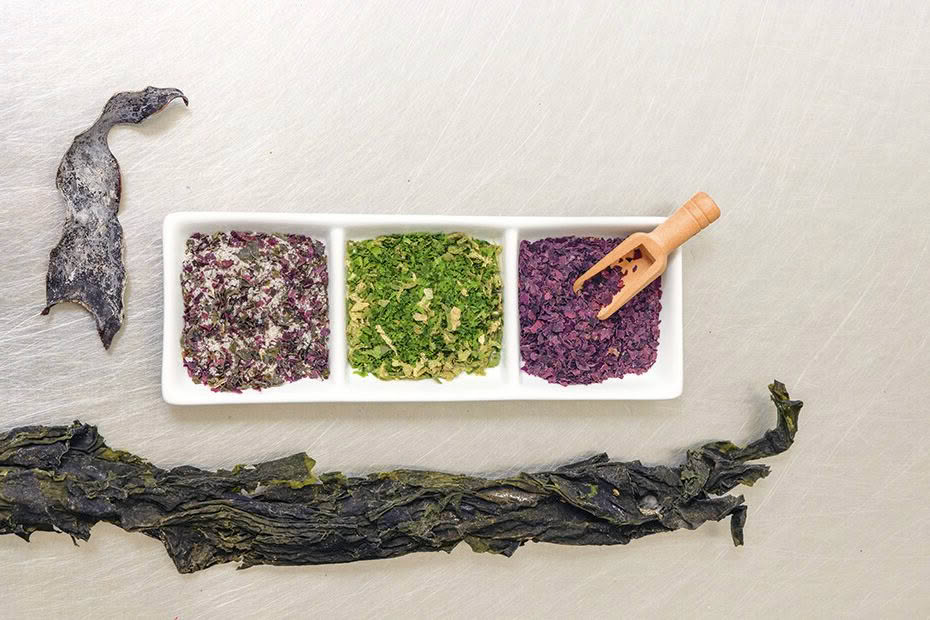
(Left to right) a strip of kombu (the white substance is glutamine, a naturally occurring amino acid in kelp that gives kombu its flavour), seaweed salt, sea lettuce flakes, atlantic dulse flakes and New Zealand-harvested wakame leaf (the seaweed most commonly used in miso soup).
Pacific Harvest’s nine blended, minimally processed products include;
Atlantic dulse, the vegan bacon, became a cult ingredient in detox smoothies during Covid-19 (thanks, Medical Medium). High iodine levels stimulate metabolism. It is sourced from sustainable operators in Ireland and France, as this species doesn’t grow in the southern hemisphere. Pacific Harvest Smoked Dulse Flakes won gold at the Outstanding New Zealand Food Producer Awards (ONZFPA) 2023. Red.
Irish moss, a valuable supplement during the Irish potato famines of the 19th century, contains carrageen and forms a gel. Model and influencer Hailey Bieber’s strawberry glaze smoothie sent sales of this algae rocketing. Also known as “sea moss”. Traditionally, it is a respiratory remedy. Red.
Wakame, a recently arrived marine pest that DoC pays to control, can only be harvested from man-made structures. “Lunacy,” says Hayley. Use in miso soup, seaweed salads, patties, stir-fries and lasagne. High in iodine and magnesium (can be higher than milk). Pacific Harvest Wakame Flakes won silver at ONZFPA 2023. Brown.
Farmed nori, like locally harvested karengo, is sourced from an organic farm in South Korea. It is used widely in sushi. It is a source of plant protein, iodine and vitamin B12. Red.
Karengo was Pacific Harvest’s most significant New Zealand-sourced product until the 2016 Kaikōura earthquake meant the harvest beds were closed for recovery. Red.
Sea spaghetti. Popular Israeli chef Yotam Ottolenghi uses this ingredient often in his dishes. Soak in ginger tea or orange juice before using in salads or stir-fries. Excellent source of iodine. Brown.
Sea chicory is a delicate garnish and is used for making custard as it contains carrageen. A very delicate-shaped frond. Imported from organic harvesters in South America. Red.
Sea lettuce is an abundant species. However, there is no local supply of food-grade product. Slightly peppery, like sorrel, can be used instead of parsley. Good source of iron and iodine. Green.
Kombu and kelp are locally harvested and air-dried to preserve their mineral density. Kombu is used in dashi stock, gently steeped at the end of the cooking process. Brown. pacificharvest.co
Raw Courgette Salad with Lemon & Caper Dressing
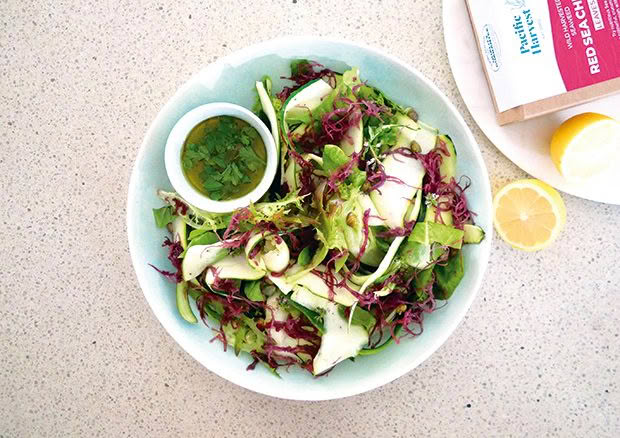
Serves: 2
INGREDIENTS
1 courgette
2 handfuls of salad leaves
fresh herbs (optional)
2g Pacific Harvest Red Sea Chicory Leaves
juice of half a lemon (more or less according to taste)
1 tablespoon olive oil
1 dessertspoon maple syrup
2 teaspoons capers
METHOD
Cut the courgette into ribbons lengthwise. Alternatively, use a mandolin slicer. In a bowl, combine the ribbons with the fresh salad leaves and herbs, if using.
Rehydrate the Pacific Harvest Red Sea Chicory Leaves in a bowl of cold water for 1 minute. (Don’t leave too long otherwise the seaweed will get gloopy.) Strain, and then scatter over the salad. (Use the leftover water to fertilise pot or garden plants.)
Mix the lemon juice, olive oil, maple syrup and capers together to make a dressing. Season. Serve the dressing on the side or drizzle over the salad.
Love this story? Subscribe now!
 This article first appeared in NZ Life & Leisure Magazine.
This article first appeared in NZ Life & Leisure Magazine.
